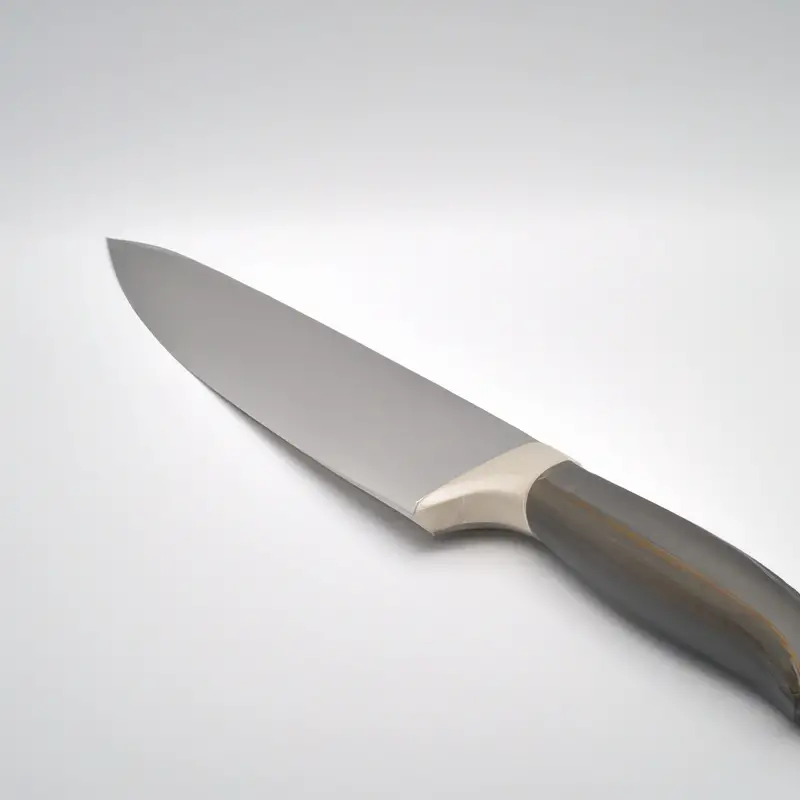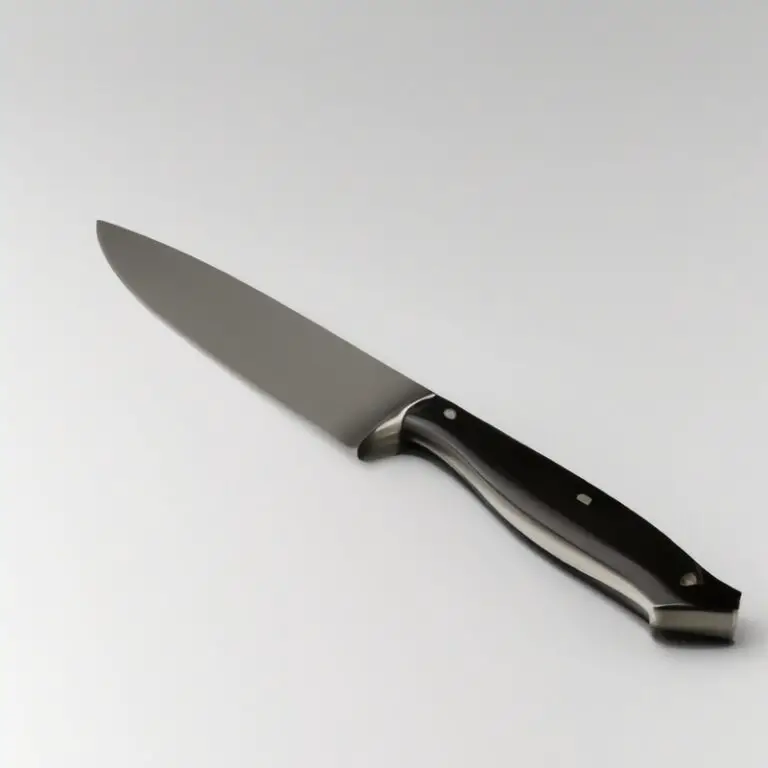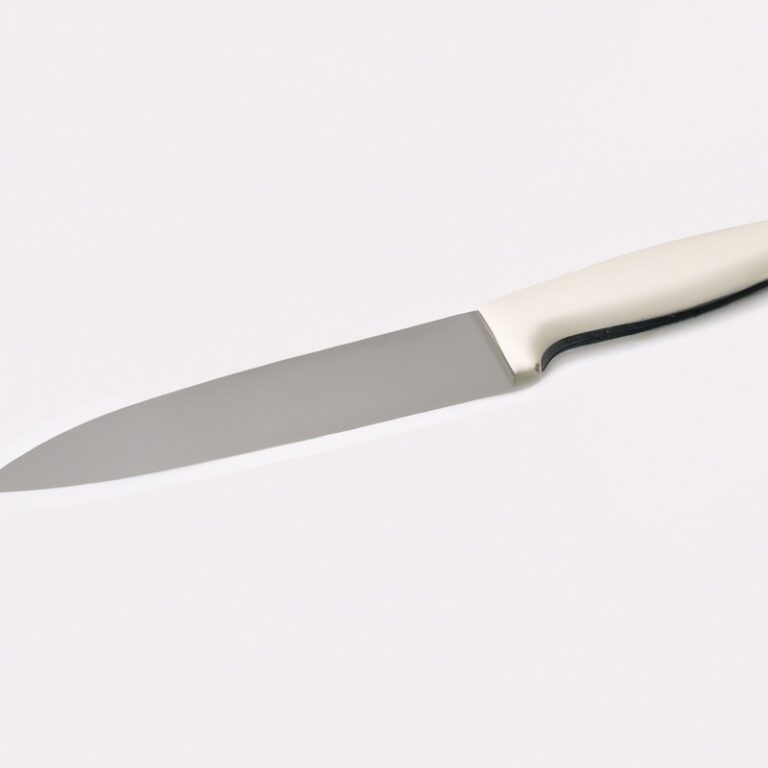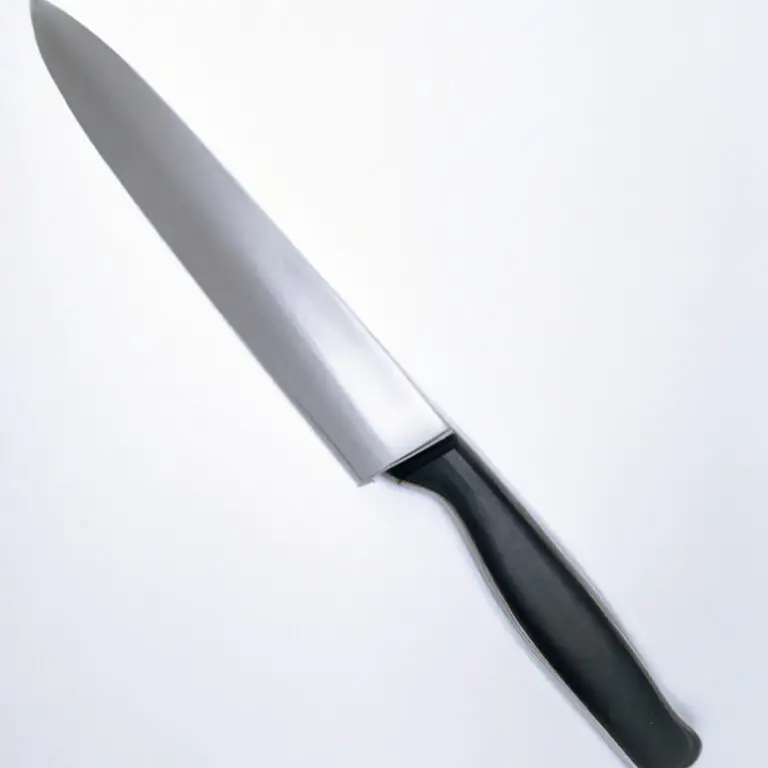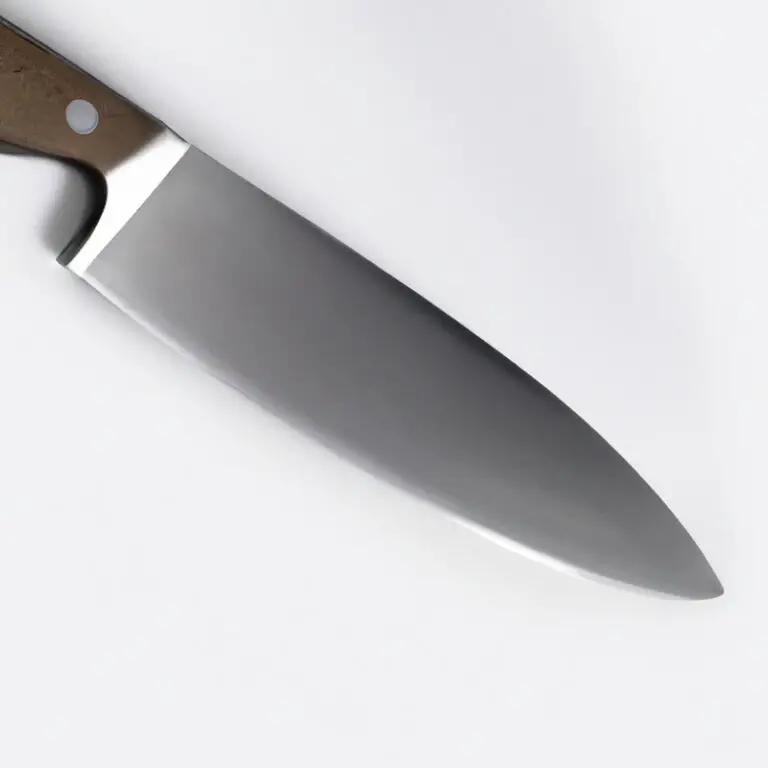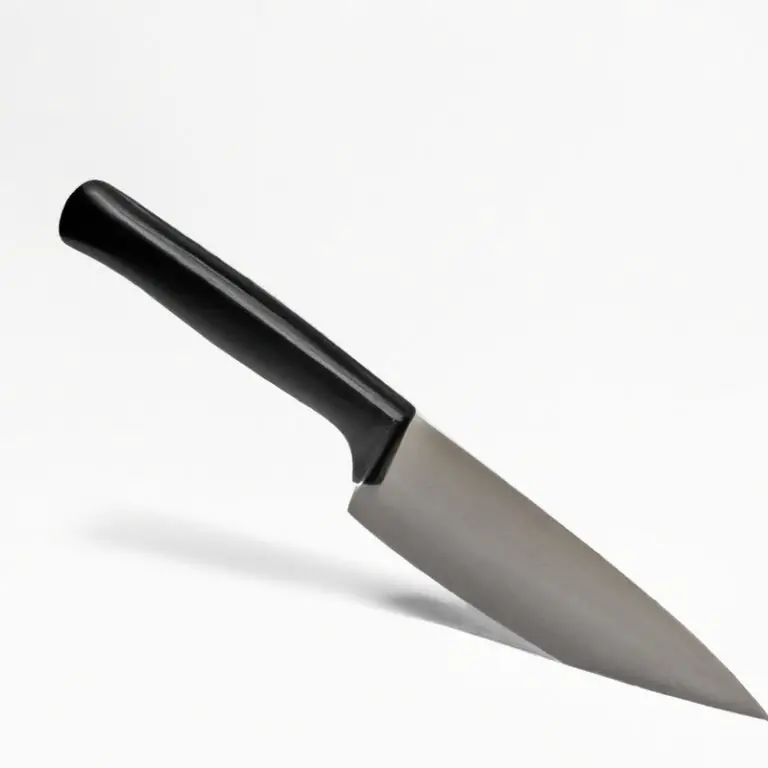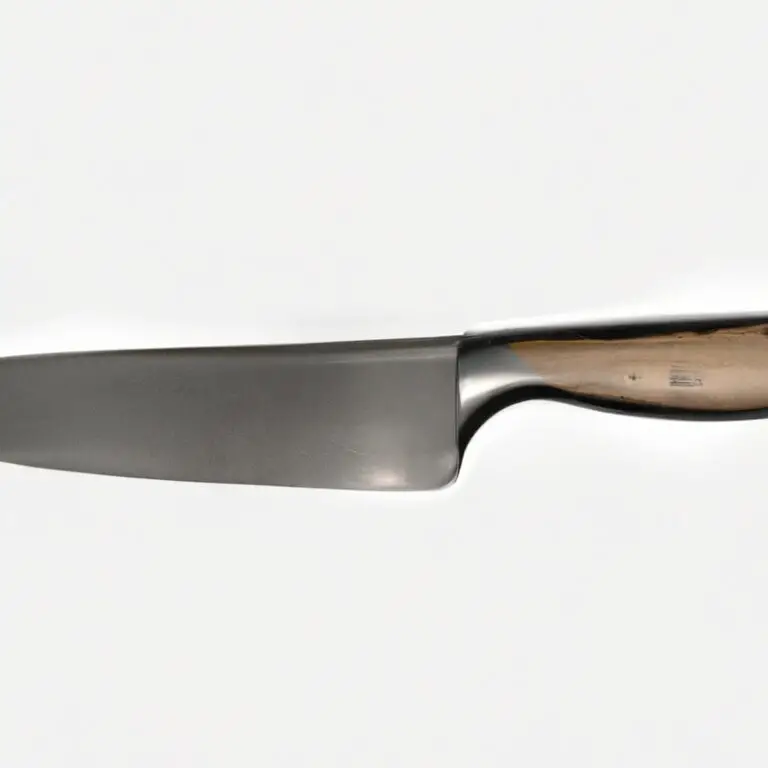How To Safely Grip a Slippery Chef Knife Handle?
Key Takeaways:
- Proper grip is crucial for safe handling of a chef knife, especially when the handle is slippery.
- Use a pinch grip or a full grip to maximize control and prevent accidents while using a slippery chef knife.
- Consider investing in anti-slip solutions for your knife handle to reduce the risk of slipping and injury.
- Regularly sharpening and maintaining your chef knife can also improve grip and prevent slips, ensuring safer and more efficient cutting.
As a home cook or professional chef, there’s nothing more frustrating than a slippery knife handle interrupting your food prep and putting your fingers in danger. But fear not, with a few tips and tricks, you can learn to safely grip a slippery chef knife handle and gain better control over your cuts.
From grip strength exercises to choosing the right knife handle material, we’ve got you covered.
In this beginner’s guide, we’ll explore techniques to improve your grip, tips for maintaining your knife handle, and even specialized grips and tape to enhance your skills. Stay tuned to prevent accidents in the kitchen and take your cutting game to the next level!
| Gripping Technique | Description |
|---|---|
| Pinch Grip | The index finger and thumb grip the blade just above the handle, with the remaining fingers curled around the handle for support. |
| Index Finger Grip | The index finger is extended along the top of the blade, while the remaining fingers grip the handle for support. |
| Full Hand Grip | The entire hand grips the handle, with the thumb resting on the blade and the fingers wrapped around the handle for support. This grip is best for larger knives. |
| Reverse Grip | The handle is held in the palm, with the blade pointing backwards and the thumb on top for support. This grip is generally not recommended for novice users. |
Understanding your knife grip: A beginner’s guide to holding a chef knife
To safely grip a chef knife, it’s essential to understand the proper grip technique. Begin by placing your index finger and thumb on opposite sides of the knife’s handle.
Wrap your remaining fingers around the handle, keeping them away from the blade.
The grip should feel comfortable and secure. Proper grip positioning will improve control and reduce the risk of injuring yourself or others.
Practice makes perfect and eventually, you’ll develop a grip that works best for you.
Grip strength exercises: Techniques to improve your grip for better knife control
Grip strength exercises play a critical role in improving your knife control. Here are some techniques that you can use to develop your grip strength:
- Squeezing exercises: Use a soft ball or hand grippers to squeeze and release repeatedly for a few minutes each day. You can also try squeezing a towel or a sponge.
- Finger extensions: Place a rubber band around your fingers and slowly extend them away from each other. Repeat this exercise for a few minutes daily.
- Weighted exercises: Hold weights with your fingertips and gradually increase the weight as your grip strength improves.
- Wrist curls: Hold a dumbbell with your palm facing upwards and curl it towards your wrist. Repeat the exercise with your palm facing downwards.
By incorporating these exercises into your daily routine, you’ll be able to develop strong and steady grip strength, which in turn will help you maintain optimal knife control.
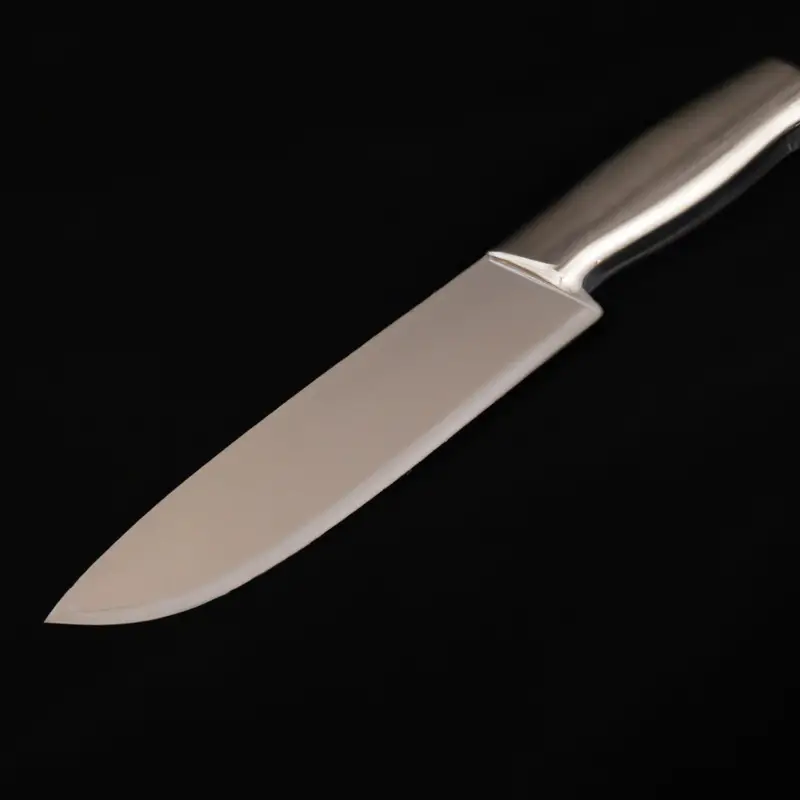
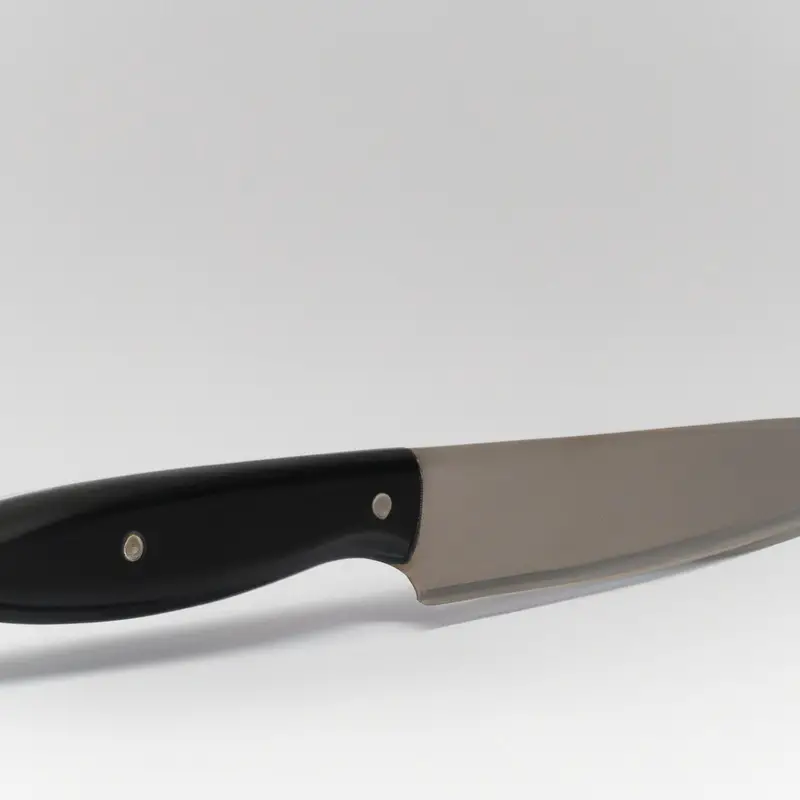
Choosing the right knife handle material for a slip-resistant grip
The right knife handle material is crucial for slip-resistant grip and improved safety in the kitchen. Traditionally, wood and plastic handles have been widely used, but for better slip resistance, silicone, and rubber handles are excellent choices.
These materials offer superior grip and are also relatively non-porous, which inhibits the potential for bacterial growth.
Other materials like stainless steel or titanium may offer a sleek look but tend to be more slippery, increasing the risk of handle slip. It’s always best to prioritize a good grip over aesthetics when selecting a knife handle material.
Knife techniques for a safer grip: Tips and tricks for slicing, chopping, and dicing
To ensure a safer grip when using a slippery chef knife handle, try these knife techniques:
- The pinch grip: Hold the handle with your dominant hand and place your thumb and index finger on the blade’s base. Use the other three fingers to wrap around the handle.
- The handle grip: Hold the handle with your dominant hand and wrap your fingers around the handle’s base while keeping your thumb on the handle’s top.
- The blade grip: Hold the blade with your non-dominant hand while placing your thumb on the back edge and your fingers on the front edge. Use your dominant hand on the handle’s grip.
Regardless of the grip technique, always keep your fingers curled and your thumb tucked in to prevent injury. Also, use a rocking motion when cutting to maintain control and balance.
By utilizing these tips, you can enhance your grip and feel more confident while slicing, chopping, and dicing with a chef knife.
Maintaining your knife handle for optimal grip consistency
Maintaining your knife handle is crucial for optimal grip consistency. Over time, the handle can become slippery, making it harder to control your knife.
Here are some tips to keep your knife handle in top condition:
- Clean your knife handle regularly with warm, soapy water and a soft cloth. Avoid abrasive cleaners that can damage the handle material.
- Dry the handle thoroughly after each use. Moisture can accumulate in the handle and create a slippery surface.
- Apply a thin layer of mineral oil or beeswax to the handle to help protect and maintain the handle’s finish. Use a soft cloth to wipe off excess oil.
- Store your knife in a safe, dry place, away from other utensils that can scratch or damage the handle.
By following these simple maintenance tips, you can ensure that your knife handle remains slip-resistant, providing optimal grip consistency for safer and more efficient handling.
Enhancing your grip with specialized knife handle grips and tape
Specialized knife handle grips and tape can enhance your grip on a slippery chef knife. These accessories come in various materials and textures to provide a slip-resistant surface.
Some popular grip materials include rubber, silicone, and thermoplastic elastomer.
These materials absorb moisture and prevent your hand from slipping, even if it’s wet or oily. Knife handle tape is another option that you can wrap around your handle to add extra grip.
This tape is usually made of a rubbery material that provides friction and cushioning.
It may also have an adhesive backing that secures the tape to the handle. When selecting a grip or tape, make sure it fits your knife handle securely and does not interfere with your grip style.
With the right grip, you can control your knife with confidence and reduce the risk of injury.
Occupational safety considerations: How to grip a knife safely in a professional kitchen
In a professional kitchen, grip safety is crucial when handling sharp knives. A proper knife grip technique can prevent accidents and injuries.
The first step to achieving a safe knife grip is to ensure that your hands and the knife handle are dry.
Moisture can reduce grip friction, making the handle slippery and hard to hold. When holding a knife, make sure that your fingers are placed on the handle and not on the blade.
Gripping the handle firmly and wrapping your fingers around it will give you more control over the knife and prevent it from slipping.
Another safety consideration is to avoid gripping the knife too tightly. Holding a knife too hard can cause hand fatigue, increasing the risk of losing control of the blade.
You should find a balance between a strong grip and a comfortable hold.
Furthermore, it is recommended to keep your thumb and index finger on the top of the knife blade, known as the pinch grip. This grip technique gives you more control and keeps your fingers away from the cutting edge, reducing the risk of accidental cuts.
Lastly, always cut away from your body, keeping the knife blade at a safe distance from your fingers and hands.
Maintaining a safe cutting angle can prevent accidents and injuries while working in a professional kitchen.
Overcoming fear and discomfort with a secure knife grip
Overcoming fear and discomfort with a secure knife grip Fear and discomfort when handling a chef knife can lead to accidents in the kitchen. It is necessary to have a secure grip on the handle for optimal control.
To overcome fear and discomfort with a knife grip, it is essential to practice.
Regular practice with a knife can help you build confidence and make the process of holding a knife feel more natural. Additionally, it is important to choose a knife handle that is comfortable and fits securely in your hand.
This will help reduce the likelihood of the knife slipping or twisting in your hand.
Using specialized grips or tape can also enhance your grip and help you feel more secure when handling a knife. Finally, it may be helpful to seek out professional guidance or training to improve your knife skills.
Learning proper technique and safety measures can help alleviate fears and discomfort and increase confidence in handling a knife.
One-handed knife techniques: Controlling your knife with precision and confidence
Controlling a knife with precision and confidence requires practice and the right techniques. One-handed knife techniques involve using your dominant hand to handle the knife while your other hand assists with the ingredients.
This technique is commonly used in professional kitchens and requires a secure grip on the knife handle.
One-handed knife techniques include the pinch grip, which involves placing your thumb and index finger on either side of the blade near the bolster, while your other fingers wrap around the handle. This grip provides excellent control and is perfect for slicing and chopping.
Another one-handed grip technique is the handle grip.
This grip involves holding the knife handle with all your fingers and the thumb. This grip is ideal for extended periods of chopping and reduces hand fatigue.
It is essential to keep your fingers elevated so that you do not slice them while chopping.
Use a rocking motion with the knife to chop rather than a chopping motion. A rocking motion is safer because it keeps the blade in constant contact with the cutting board.
Mastering one-handed knife techniques requires practice, patience and a secure grip.
Use the pinch or handle grip for precision and control, and keep your fingers elevated for safety. Utilize a rocking motion while chopping using one-handed knife techniques.
Common mistakes to avoid when gripping a chef knife: How to prevent accidents in the kitchen
When it comes to handling a chef knife, there are certain mistakes that can lead to accidents in the kitchen. It is important to be aware of these mistakes to prevent injury while using a chef knife.
Here are some common mistakes to avoid when gripping a chef knife:
- Gripping too tightly: A tight grip can result in loss of control over the knife, causing it to slip and possibly injure you or someone else. It is best to grip the knife with a firm but relaxed grip.
- Holding the knife too far back on the handle: Holding the knife too far back can cause your fingers to slip onto the blade, which can be dangerous. Hold the knife with your fingers further up on the handle, near the blade.
- Using a wet or greasy hand: Wet or greasy hands can lead to a slippery knife handle, which can cause accidents. Always dry your hands before using a knife, and if the handle becomes greasy during use, wipe it clean with a cloth.
- Cutting towards yourself: This is a dangerous mistake that can result in serious injury. Always cut away from your body and keep your fingers behind the blade when slicing.
By avoiding these common mistakes when gripping a chef knife, you can significantly reduce the risk of accidents in the kitchen and ensure safe and effective use of your knife.
Final Verdict
Mastering your grip on a slippery knife handle can take time and practice, but it is essential for safe and efficient kitchen work. By understanding your knife grip, improving your grip strength, choosing the right handle material, using proper techniques, maintaining your knife handle, and exploring specialized grip options, you can enhance your control, comfort, and confidence with a chef knife.
Additionally, it is crucial to prioritize occupational safety and overcome fear and discomfort to prevent accidents and injuries.
By avoiding common mistakes and implementing these tips and tricks, you can elevate your knife skills and enjoy the art of cooking with ease. Remember, a secure grip is not only a matter of technique but also a reflection of your expertise and professionalism in the culinary world.

